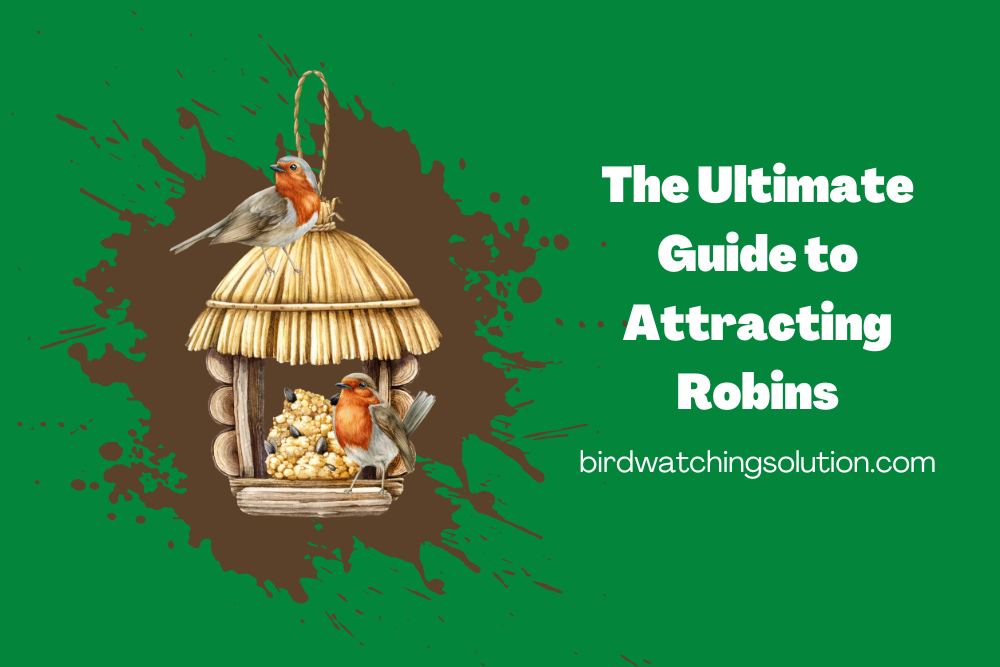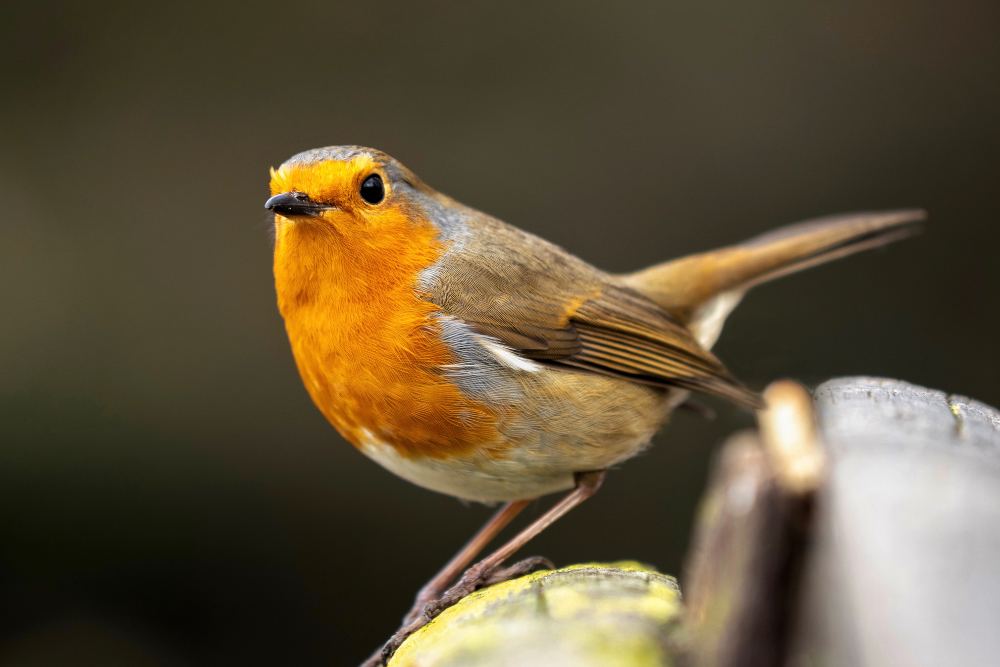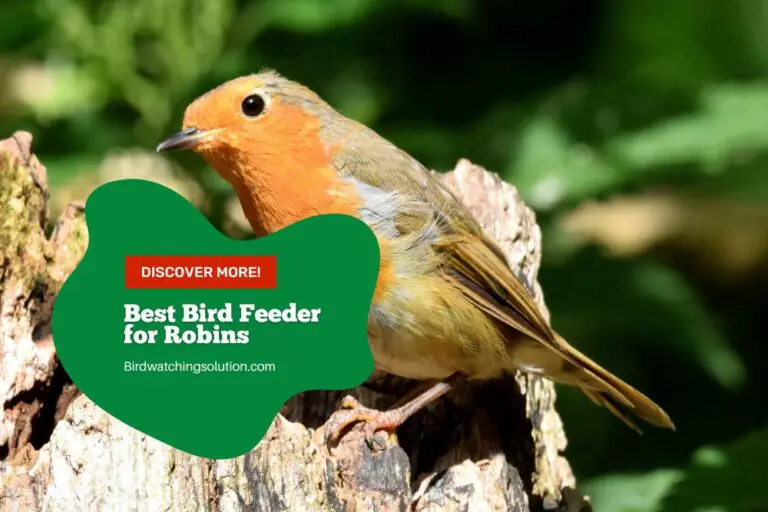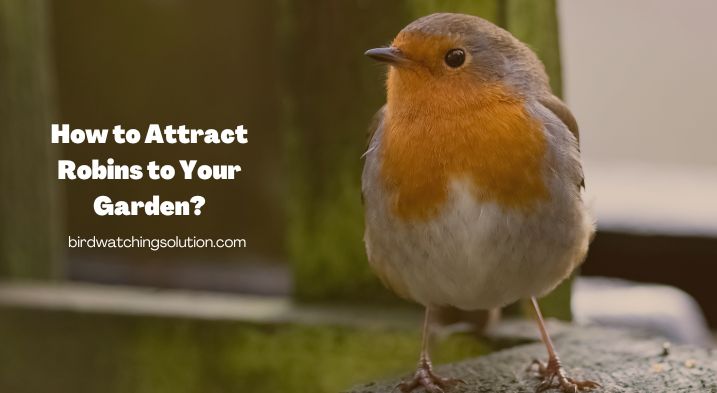The Ultimate Guide to Attracting Robins to Your Yard
Robins are enchanting birds with their vibrant red breasts and melodious songs. These delightful creatures add a touch of beauty to your yard and offer numerous benefits.
Attracting robins to your yard can enhance biodiversity, promote natural pest control, and provide endless entertainment through their graceful presence.
Creating a welcoming environment allows you to establish a haven that beckons these charming birds to visit and even nest in your yard.
This comprehensive guide will explore the steps to attract robins, ensuring a thriving habitat for these delightful avian friends.
So let’s embark on this journey and discover the secrets to attracting robins to your yard.

Understanding Robins
Robins, scientifically known as Turdus migratorius, are medium-sized songbirds that belong to the thrush family.
These birds are known for their distinctive physical characteristics, behaviors, and unique traits that set them apart from other avian species.
Understanding their habitat preferences and nesting habits is crucial in creating an environment that attracts and accommodates these delightful creatures.
Physical Characteristics and Behaviors of Robins
- Description of their appearance, including their vibrant red breast, brown back, and white underparts.
- Notable features such as their black eyes, yellow beak, and long legs.
- Size, typically measuring about 9 to 11 inches (23 to 28 cm) in length, with a wingspan of 14 3/4 – 16 1/2 inches.
- Migratory behavior, with many robins undertaking long-distance journeys during seasonal migrations.
- Notable singing ability and the melodious songs they produce, especially during the breeding season.
Unique Traits That Make Robins Special
- Robins’ symbolic significance in folklore and cultural traditions is often associated with the arrival of spring and renewal.
- Their adaptability to various environments, from woodlands to urban areas, makes them a common sight in many regions.
- Role as ground foragers, known for their distinctive “run-stop-listen” hunting technique for locating earthworms and insects.
- Ability to tilt their heads to detect prey through monocular vision, providing them with a unique hunting advantage.

Habitat Preferences and Nesting Habits
- Robins prefer habitats with open spaces, trees, and shrubs, allowing them to forage on the ground while accessing perches and nesting sites.
- Nesting preferences include building cup-shaped nests made of twigs, grass, mud, and lined with softer materials.
- Common nesting locations include the forks of tree branches, ledges, and even man-made structures like window sills and nest boxes.
- Timing of nesting, typically occurring in spring and early summer, to coincide with the availability of food resources and favorable weather conditions.
By understanding robins’ physical characteristics, behaviors, unique traits, habitat preferences, and nesting habits, you can effectively create an environment that caters to their needs and increases the likelihood of attracting these beautiful birds to your yard.
Things That Can Help Attract Robins to Your Yard
- Earthworm Castings Organic Fertilizer: A bag of an organic fertilizer rich in nutrients, promoting healthy soil and attracting earthworms, a valuable food source for robins.
- Nature’s Way Bird Products CWH1 Cedar Bluebird Viewing House: A cedar birdhouse with a side viewing window allows one to observe nesting robins.
- Squirrel Buster Legacy Squirrel-proof Bird Feeder: A squirrel-proof bird feeder that prevents larger pests from accessing the bird food, attracting robins while deterring unwanted visitors.
- API Heated Birdbath: A heated birdbath with a thermostatically controlled design ensures a constant supply of unfrozen water for robins during winter.
Assessing Your Yard When Attracting Robins
Before embarking on the journey to attract robins to your yard, evaluating your yard’s suitability for these delightful birds is essential. By assessing the existing conditions, identifying potential obstacles or hazards, and determining the necessary changes and improvements, you can create an environment that is truly inviting for robins.
Evaluating Your Yard’s Current Suitability for Robins
- Assessing the size and layout of your yard, considering if it provides adequate space for robins to forage, fly, and potentially nest.
- Examining the presence of trees, shrubs, and other vegetation that can serve as perches, shelter, and potential nesting sites for robins.
- Observing the availability of natural food sources, such as fruit-bearing trees or plants that attract insects, are important food options for robins.
Identifying Potential Obstacles or Hazards
- Identifying potential threats to robins, such as nearby busy roads, excessive noise, or high levels of human activity that may discourage their presence.
- Noting any existing hazards in your yard, such as toxic plants, excessive pesticide use, or structures that may pose risks to robins or their nests.

Determining the Necessary Changes and Improvements
- Enhancing the landscaping by incorporating native trees, shrubs, and plants attractive to robins and providing food sources and potential nesting sites.
- Removing or modifying hazards in the yard, such as toxic plants, chemicals, or structures, may pose risks to robins.
- Considering the addition of features like birdbaths, feeders, or nest boxes that can enhance the appeal of your yard to robins.
- Implementing practices that create a bird-friendly environment, such as reducing pesticide use, promoting organic gardening methods, and minimizing excessive noise and disturbance.
By carefully assessing your yard’s suitability, identifying potential obstacles or hazards, and determining the necessary changes and improvements, you can transform your space into an attractive haven that beckons robins to visit and potentially make it their home.
How to Attract Robins to Your Backyard?
When it comes to attracting robins, there are some simple steps that you need to follow. These steps include preparing a friendly habitat for robins, making it a haven, and providing food.
Choosing the Right Plants for Robins
Choosing the Right Plants To attract robins and provide them with suitable habitats, selecting the right plants is essential. Consider the following aspects when choosing plants for your yard:
Native Plants that Attract Robins and Provide Food
- Research and select native plant species that produce berries, fruits, or seeds that robins love to feed on.
- Examples include Serviceberry, dogwood, elderberry, Holly, and Sumac.
- Plant various native plants to ensure a continuous food supply throughout the year.
Trees, Shrubs, and Flowers that Offer Nesting Sites and Shelter
- Opt for trees and shrubs with dense foliage and sturdy branches that can serve as potential nesting sites for robins.
- Include plants like oak, maple, pine, and cedar.
- Integrate flowering plants and shrubs that attract insects, as they provide a crucial food source for robins during the breeding season.
Importance of a Diverse and Seasonal Landscape
- Aim for a diverse landscape with plants that bloom and bear fruits at different times of the year.
- This diversity ensures a continuous food supply and attracts many insects, enhancing the overall habitat appeal.
Providing Water Sources for Robins
Water is vital for robins’ survival and attracts them to your yard. Consider the following when providing water sources:
Incorporating Birdbaths, Shallow Dishes, or Fountains
- Place birdbaths or shallow dishes on the ground or a pedestal in your yard.
- Choose birdbaths with gently sloping edges for easy access by robins.
Ensuring Clean and Accessible Water for Drinking and Bathing
- Regularly clean and refill the water sources to ensure they are clean and free of contaminants.
- Provide shallow areas within the water source for robins to bathe.
Placement Considerations for Water Sources
- Position the water sources in a visible and open area, away from dense vegetation, to allow robins to spot them easily.
- Ensure the water sources are within a reasonable distance from perching spots for robins to access them conveniently.
Creating a Welcoming Habitat
Creating a habitat that offers robins suitable perches, nesting opportunities, and a bird-friendly environment is crucial:
Incorporating Suitable Perches and Roosting Spots
- Include trees, tall shrubs, or birdhouses with perches to provide roosting and resting spots for robins.
- Robins prefer higher perches to survey their surroundings and for singing.
Utilizing Natural Materials for Nesting Opportunities
- Leave leaf litter, twigs, and small branches on the ground for robins to use as nesting materials.
- Avoid excessive removal of fallen leaves and debris, as they provide nesting opportunities and attract insects.
Managing Yard Maintenance Practices for a Bird-Friendly Environment
- Minimize or avoid using pesticides, herbicides, and chemical fertilizers that can harm robins and their food sources.
- Implement organic gardening practices and opt for natural alternatives.
- Avoid excessive pruning during the nesting season to prevent disturbance.
By choosing the right plants, providing water sources, and creating a welcoming habitat, you can establish a bird-friendly landscape that attracts robins and provides them with the necessary resources to thrive in your yard.

Food Sources and Feeding Practices For Robins
Natural Food Sources
Robins rely on a variety of natural food sources in their diet. Understanding and incorporating these sources into your yard can attract and support robins effectively.
Identifying Natural Food Sources Robins Rely On
- Earthworms: Robins have a strong affinity for earthworms and depend on them as a primary food source.
- Insects: Robins also consume a wide range of insects, including beetles, caterpillars, grasshoppers, and spiders.
- Fruits and Berries: Many robins supplement their diet with fruits and berries, especially during breeding.
Incorporating Fruit-Bearing Trees and Bushes
- Plant fruit-bearing trees and shrubs in your yard, such as cherry, apple, mulberry, or raspberry bushes.
- These plants provide a natural and seasonal food source that attracts robins and supports their dietary needs.
Creating a Habitat for Earthworms and Insects
- Avoid using chemical pesticides that can harm earthworms and insects.
- Implement organic gardening practices to promote a healthy population of earthworms and insects, which robins rely on for food.
Supplemental Feeding
In addition to natural food sources, you can offer supplemental food to attract robins and provide extra nourishment, especially during challenging times.
Choosing Appropriate Bird Feeders and Food Options
- Select platform or tray feeders that accommodate robins, as they prefer to feed on the ground or on low perches.
- Avoid tube feeders, as they are unsuitable for robins’ feeding habits.
Offering Mealworms, Fruits, and Berries
- Provide mealworms as a protein-rich option in feeders or shallow dishes.
- To attract robins, offer fresh or dried fruits, such as chopped apples, berries, or raisins.
- Ensure the food is fresh and clean, replacing it regularly to prevent spoilage or contamination.
Understanding When and How to Provide Supplemental Food
- Offer supplemental food during periods of scarcity, such as winter or when natural food sources are limited.
- Place the feeders or dishes in open areas within the yard, away from dense vegetation, for easy access by robins.
- Monitor the feeding activity and adjust the amount of food provided accordingly.
Supplemental feeding can be a valuable resource for robins, especially when natural food sources are scarce. However, it is important to remember that natural food sources should remain their primary diet.
By identifying natural food sources, incorporating fruit-bearing trees and bushes, and providing supplemental food appropriately, you can create a well-rounded feeding environment that attracts and supports robins in your yard.
Nesting and Breeding Considerations for Robins
Nest Placement and Design
Creating suitable nesting opportunities is essential to attract robins to breed and raise their young in your yard. Consider the following factors when it comes to nest placement and design:
Suitable Locations for Robin Nests
- Robins prefer nesting in areas of open space and vegetation, such as trees, shrubs, or thickets.
- Look for locations with adequate shelter and protection from predators, such as dense foliage or branches near the trunk of a tree.
Types of Nesting Materials Robins Prefer
- Robins construct their nests using a combination of twigs, grass, leaves, and mud.
- Ensure these materials are readily available naturally in your yard or by providing suitable nesting materials.
DIY Nest Box Options
- Consider building or installing nest boxes specifically designed for robins.
- These boxes should have an open-front design, similar to an open cup, with a shallow platform and a sturdy structure.
Identifying Predators and Threats to Robins
Obviously, when attracting robins to your backyard, you must be fully aware of how to protect them and make your yard a haven for them.
If you don’t know about the threats to robins already, don’t worry because I am about to tell you exactly what you should be worrying about.
- Recognizing Predators that May Threaten Robins
- Identify common predators that threaten robins, such as cats, snakes, raccoons, squirrels, and larger birds of prey.
- Be aware of their behaviors and habitats to understand potential risks better.
- Implementing Measures to Deter Predators
- Create barriers, such as fences or netting, to prevent access to nesting areas.
- Place bird feeders and nest boxes in locations that are less accessible to predators.
- Use scare devices, like reflective tape or predator decoys, to deter potential threats.
- Balancing Safety without Disrupting the Ecosystem
- Strive for a balanced approach that considers the safety of robins and the natural ecosystem.
- Avoid excessive predator control measures that may disrupt the ecological balance.
- Understanding the Dangers of Window Collisions
- Window collisions threaten birds, including robins, as they may not recognize the glass as a barrier.
- Collisions can result in injury or death.
- Implementing Bird-Safe Window Solutions
- Apply window decals, stickers, or films that create a visible pattern to make the glass more apparent to birds.
- Install external screens or netting to reduce the reflective surface of windows.
- Close blinds or curtains partially to break up reflections.
- Raising Awareness about the Issue
- Educate others about the dangers of window collisions and encourage them to implement bird-safe solutions.
- Share information and resources with neighbors, local organizations, and online communities.
Last Minute Thoughts!
Assessing your yard’s suitability for robins is crucial to identify any obstacles or hazards that may deter them.
Making the necessary changes and improvements, such as providing suitable plants, water sources, and perches, will enhance the attractiveness of your yard as a habitat for robins.
Remember to focus on providing natural food sources, both through planting native plants that bear fruits and berries and by encouraging earthworms and insects to thrive in your yard.
Supplemental feeding can also be beneficial, particularly during periods of food scarcity, but should not replace natural food sources.
Additionally, it’s crucial to be aware of potential threats and take measures to deter common predators.
With these considerations in mind, you can transform your yard into a haven that attracts and supports robins, bringing joy and beauty to your surroundings while contributing to the preservation of these beloved birds.
Happy birdwatching!


